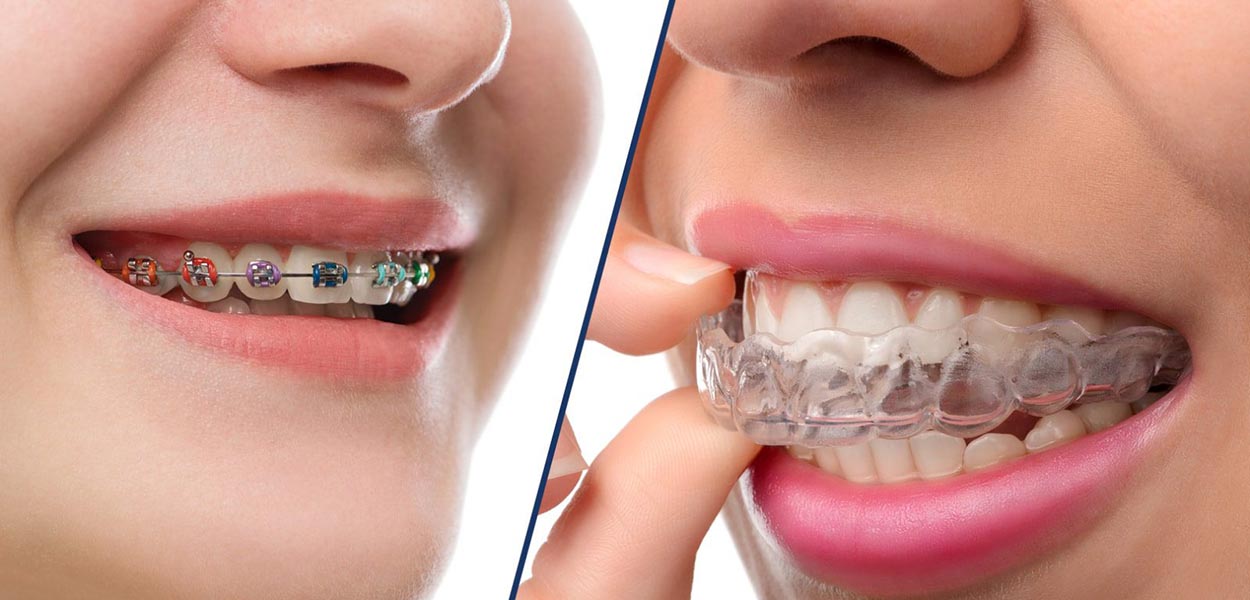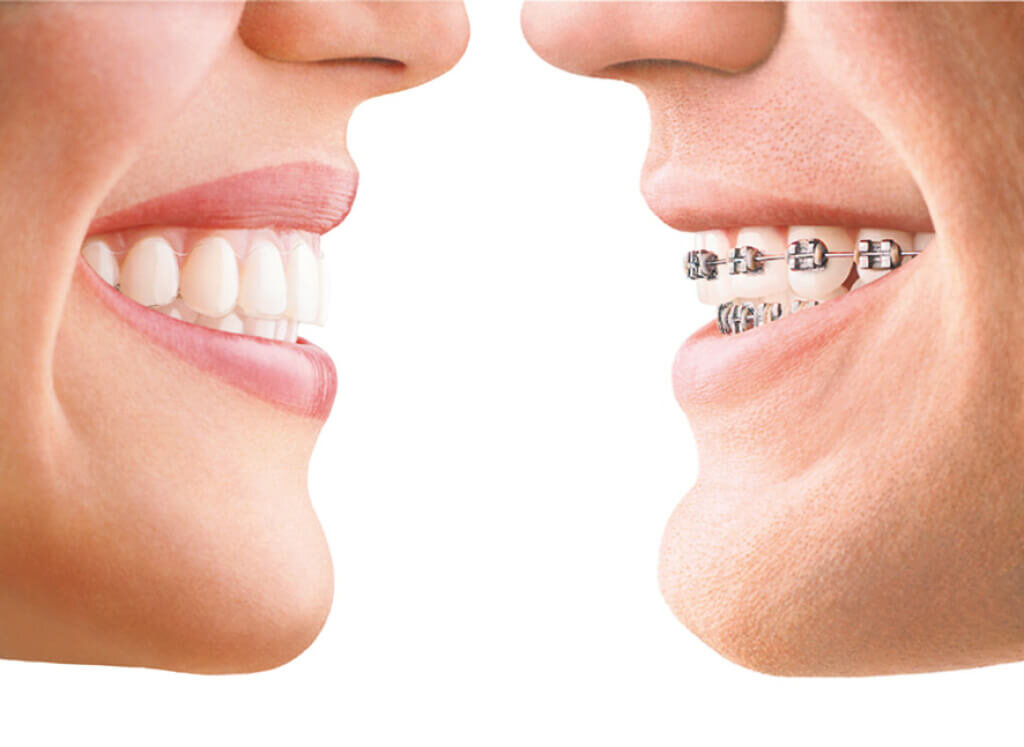Invisalign for Teens: A Modern Solution to Straightening Young Smiles
Invisalign for Teens: A Modern Solution to Straightening Young Smiles
Blog Article
Invisalign vs. Typical Dental braces: Which Alternative Is Right for You?
When considering orthodontic therapy, the choice in between Invisalign and typical dental braces offers several vital aspects that warrant careful analysis. Invisalign supplies a very discreet choice with removable aligners, while traditional dental braces give a much more visible yet reliable remedy for extreme misalignment.
Introduction of Therapy Choices

On the other hand, typical dental braces include steel braces and wires that are adhered to the teeth. This method applies continual stress over time to achieve alignment. While effective for complicated orthodontic issues, typical braces need normal visits for changes and can present difficulties in keeping oral health due to the difficulty of cleaning up about braces and cables.
Both options have their values, and the option frequently hinges on particular oral conditions, way of life choices, and individual compliance. Ultimately, speaking with an orthodontic specialist is essential for determining one of the most appropriate therapy strategy customized to specific demands. Understanding the nuances of each alternative can considerably influence the general success of orthodontic treatment.
Visual Considerations
A significant aspect influencing the choice between Invisalign and typical braces is the aesthetic allure each therapy provides. Invisalign aligners are crafted from clear plastic, making them essentially undetectable when used. This discreet appearance is particularly interesting young adults and adults that may really feel uneasy regarding their orthodontic treatment. The capacity to maintain a natural smile throughout the positioning process can significantly boost the patient's self-confidence in social and specialist settings.
In comparison, standard dental braces include metal braces and wires, which can be extra recognizable. While innovations in orthodontic modern technology have actually brought about the growth of smaller braces and colored elastics, conventional dental braces still keep an even more conspicuous profile. For some individuals, the visibility of braces may hinder them from looking for needed therapy.
Inevitably, the choice between Invisalign and conventional dental braces might depend upon personal choices relating to aesthetic appeals. Clients who prioritize discretion usually lean toward Invisalign, while those who are much less worried concerning visibility may select conventional braces. Comprehending the aesthetic effects of each choice is critical for making a notified decision that straightens with one's way of living and choices.
Comfort and Convenience

In regards to comfort, Invisalign aligners are detachable, making it possible for patients to appreciate their favored foods without restriction and maintain optimum dental health. Cleaning and flossing are simplified, as the aligners can be gotten during these regimens, whereas typical braces require mindful navigating around brackets and cords.
In comparison, typical dental braces demand regular modifications, making them much less convenient for those with busy timetables. Overall, the convenience and convenience of Invisalign make it an enticing selection for lots of individuals looking for orthodontic treatment.
Treatment Period and Performance
While both Invisalign and standard braces are effective in fixing oral imbalances, the period of treatment can vary significantly between both options. Typically, Invisalign treatment can take anywhere from 12 to 18 months, depending upon the complexity of the situation. The clear aligners function by slowly moving teeth right into their wanted settings, and routine follow-ups with an orthodontist assistance ensure development stays on track.
On the other hand, typical dental braces typically need a longer dedication, usually varying from 18 months to 3 years. This results from their set nature and making use of wires and brackets, which can be extra reliable for intricate situations and serious imbalances (Invisalign). The treatment performance of standard braces is well-documented, as they permit for accurate adjustments and greater control over tooth movement
Inevitably, the selection between Invisalign and typical dental braces may depend upon both the anticipated treatment duration and the specific oral problems available. Consulting with an orthodontist is crucial, as they can give tailored referrals based upon individual requirements, guaranteeing the selected method straightens with preferred results and timeframes.
Cost Comparison and Insurance Choices
Price plays a considerable duty in the decision-making process for people taking into consideration orthodontic treatment, whether selecting Invisalign or standard braces. On standard, the cost of Invisalign ranges click from $3,000 to $8,000, while standard braces commonly cost in between $2,000 and $6,000. Elements affecting these prices consist of the complexity of the case, the duration of treatment, and geographical place.
Numerous oral insurance coverage plans offer partial insurance coverage for orthodontic therapies, yet the specifics can differ commonly. Typically, typical dental braces may be much more frequently covered by insurance policy strategies contrasted to Invisalign, which some insurance providers categorize as a cosmetic treatment.
In addition, numerous orthodontic techniques offer versatile layaway plan, making both therapy alternatives more accessible. Clients need to inquire concerning potential funding options and discounts for ahead of time settlements. Examining the overall price, consisting of insurance advantages and layaway plan, is crucial for making a notified choice that lines up with both aesthetic preferences and spending plan factors to consider.

Final Thought
In recap, the option in between Invisalign and typical dental braces hinges on several factors, consisting of important site aesthetic preferences, comfort, treatment duration, and expense. Invisalign offers a discreet, removable alternative that promotes dental health and dietary adaptability, while typical dental braces might be better for intricate dental concerns and usually come at a reduced price factor. Inevitably, examination with an orthodontist is important to assess individual conditions and determine one of the most suitable therapy option for attaining optimal oral alignment.
When thinking about orthodontic treatment, the choice in between Invisalign and typical braces presents several important factors that merit cautious assessment.Comparing Invisalign and conventional braces exposes distinct treatment options for orthodontic correction.While both Invisalign and traditional braces are efficient in dealing with dental imbalances, the period of therapy can vary dramatically in between the 2 options.Expense plays a significant function in the decision-making procedure for individuals taking into consideration orthodontic therapy, whether opting for Invisalign or standard dental braces.In read this summary, the option between Invisalign and conventional dental braces hinges on several factors, consisting of visual choices, comfort, treatment duration, and expense.
Report this page